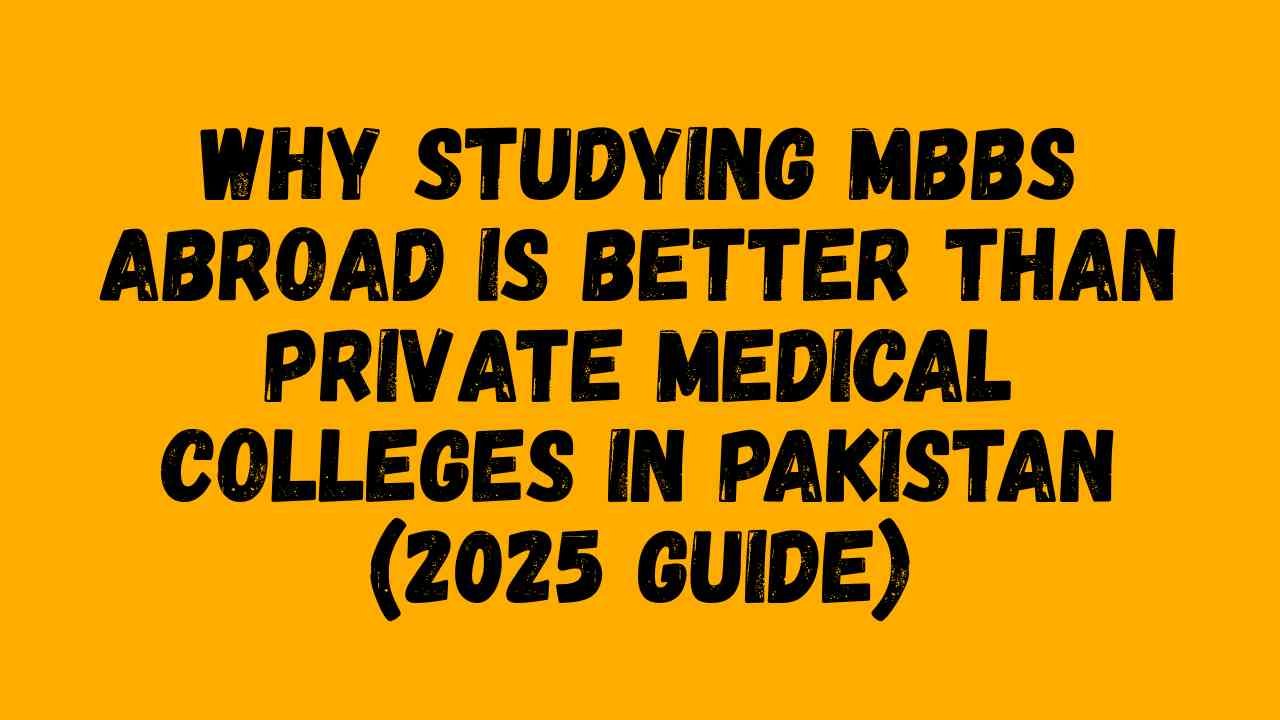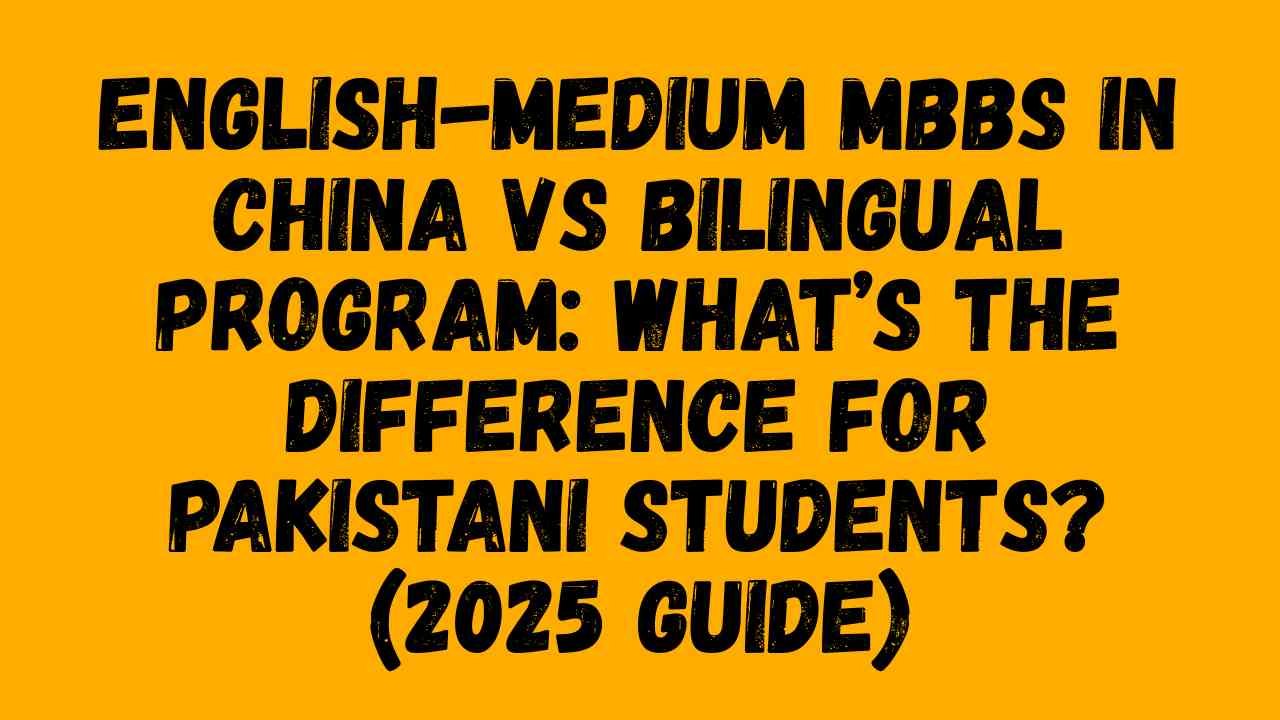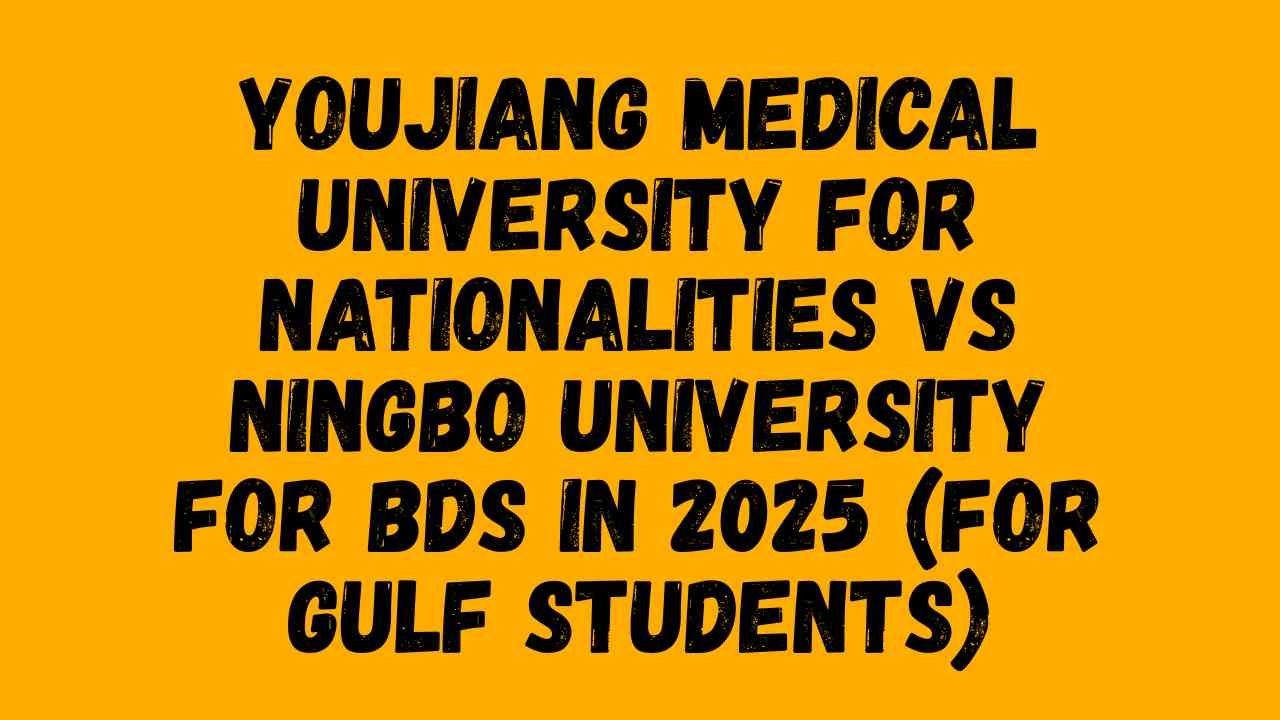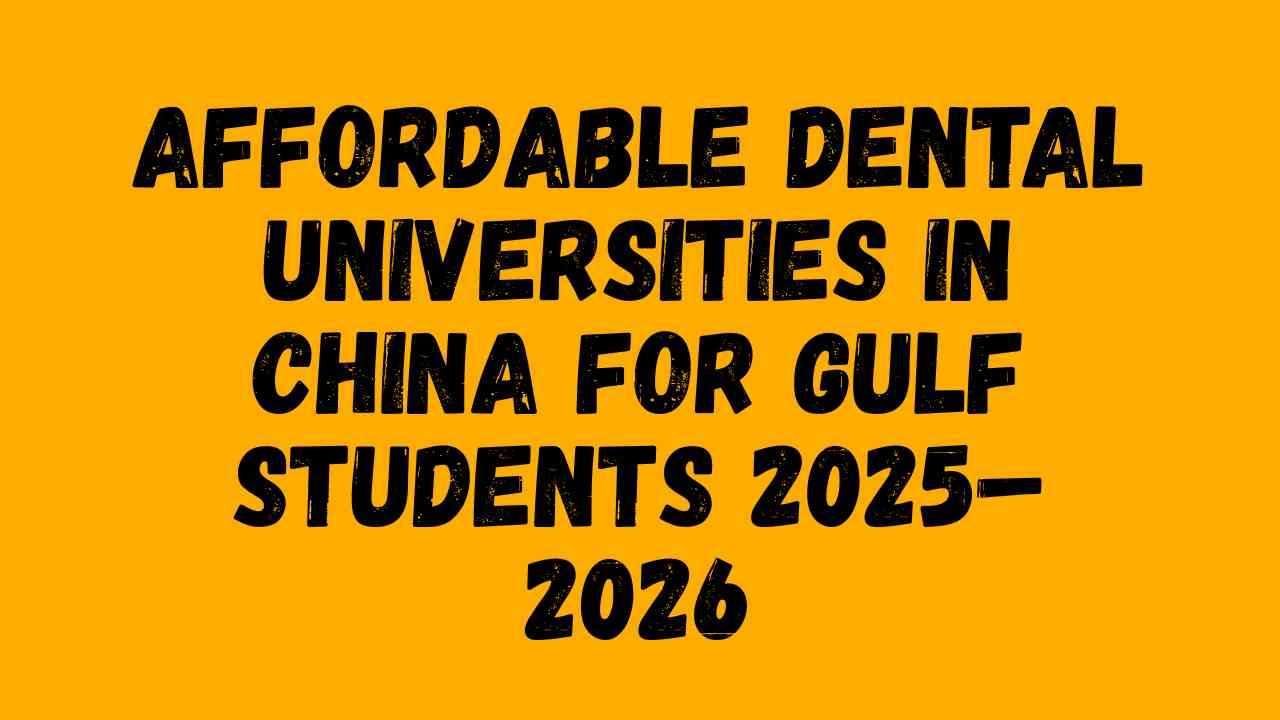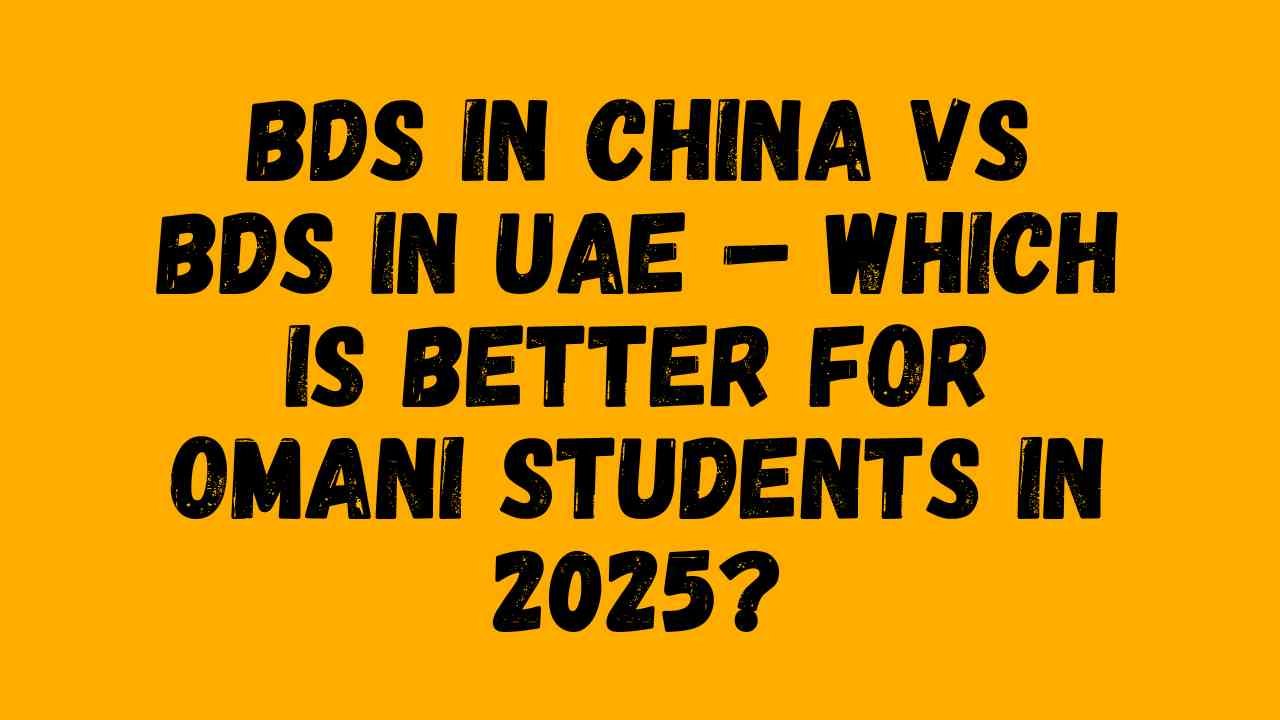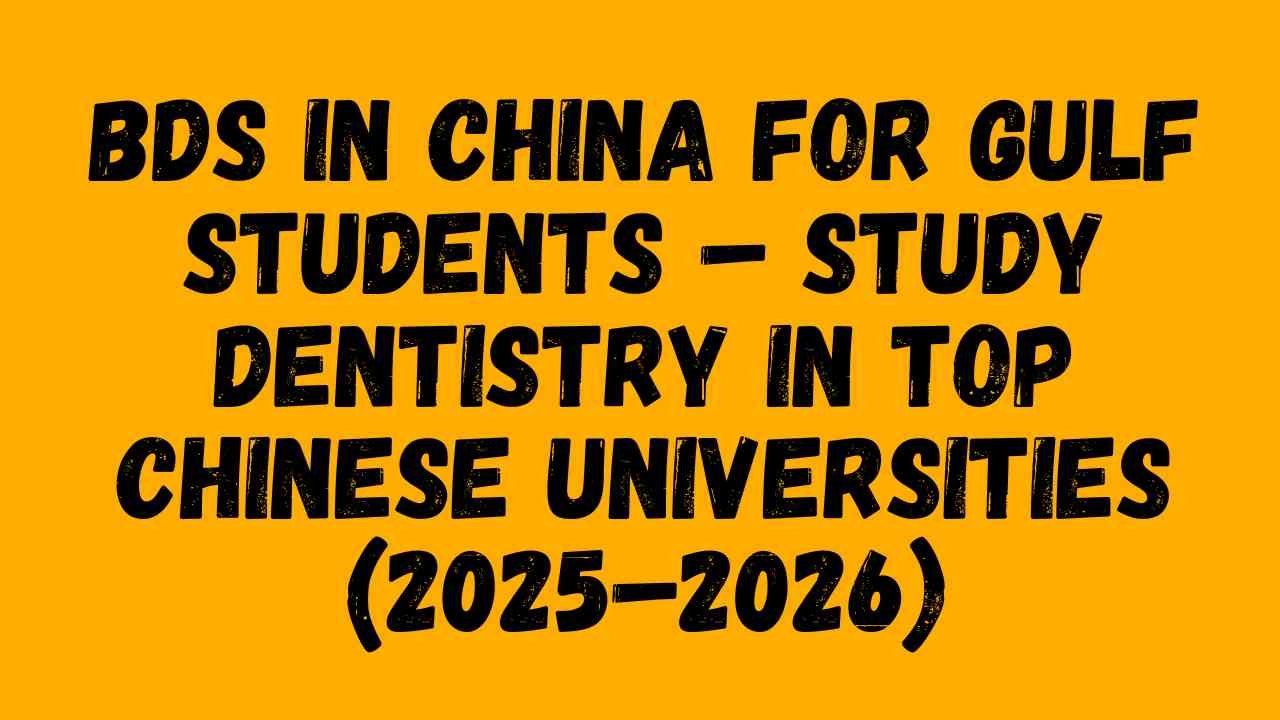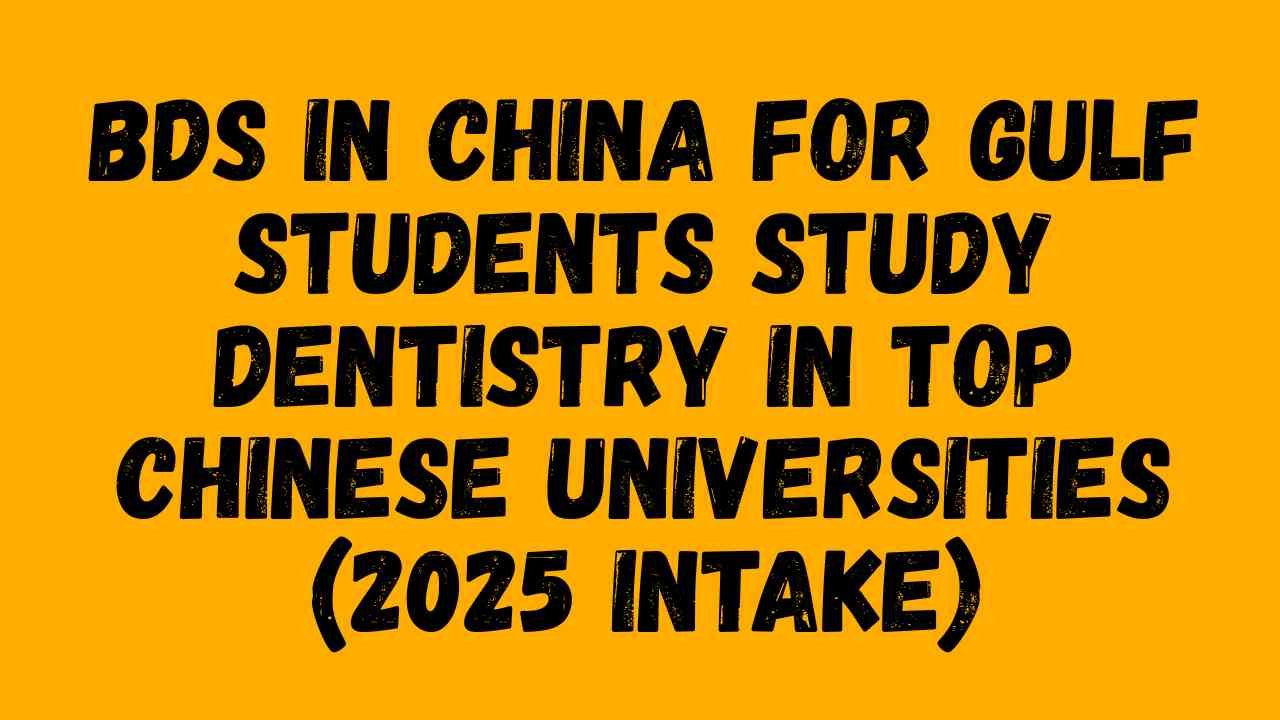English-Medium MBBS in China vs Bilingual Program: What’s the Difference for Pakistani Students? (2025 Guide)
Home > English-Medium MBBS in China vs Bilingual Program: What’s the Difference for Pakistani Students? (2025 Guide)
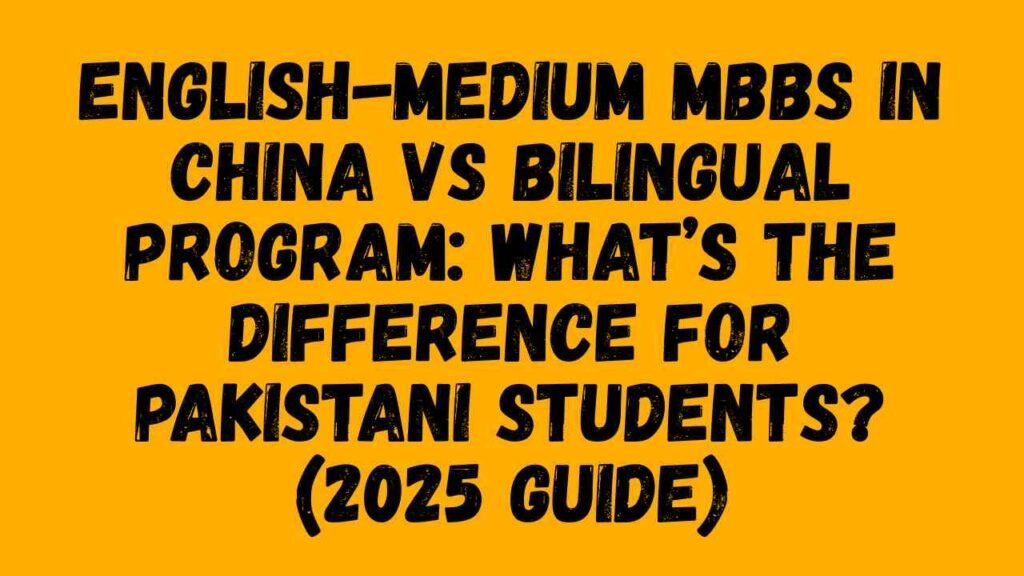
Understanding MBBS Programs in China
Many Pakistani students applying for MBBS in the 2025 intake often hear about two types of programs: English-medium MBBS and bilingual MBBS. However, the actual difference between them is rarely explained clearly by agents or online sources. This confusion has caused serious problems for students later, especially when they return to Pakistan for PMDC (Pakistan Medical & Dental Council) registration or attempt the NLE exam.
At Soft Consultants, our goal is to make this distinction absolutely clear so that students and parents can make informed, safe, and long-term career decisions. Understanding this difference can mean the gap between a smooth MBBS journey and one filled with communication issues, recognition problems, and wasted investment.
If you are planning to apply for MBBS in China 2025, read this full guide carefully before choosing your university. For transparent guidance and verified admissions, contact Soft Consultants today.
What Is an English-Medium MBBS Program?
- All lectures, textbooks, exams, and class discussions are conducted in English.
- The universities offering these programs have MOE (Ministry of Education) approval to teach medicine in English.
- Teachers are either fluent in English or have international teaching backgrounds.
- The internship year may be in English or partly in Chinese, depending on the hospital and region.
This format is ideal for Pakistani students who are comfortable with English and plan to return to Pakistan after graduation.
What Is a Bilingual MBBS Program?
- The first 2–3 years of basic medical sciences are taught mainly in English.
- From the clinical stage (Year 4 onwards), classes, hospital rounds, and patient interaction are mainly in Mandarin Chinese.
- Students must pass HSK Level 3–4 (Chinese proficiency test) before starting clinical rotations.
- These programs are usually aimed at local Chinese students or foreigners who wish to work in China long-term.
Both program types are legitimate, but only English-medium MBBS universities approved by MOE are recognized by PMDC for Pakistani students.
| Type | Medium of Instruction | Duration | Internship Language | Ideal For |
|---|---|---|---|---|
| English-Medium | Fully English | 5–6 years | English/Chinese (optional) | International students |
| Bilingual | English + Chinese | 6 years | Chinese | Students planning to work in China |
Why the Difference Matters for Pakistani Students
1. PMDC Recognition and Licensing
PMDC (Pakistan Medical & Dental Council) only recognizes MBBS degrees from MOE-approved English-medium universities in China. If you mistakenly enroll in a bilingual program that is not fully English-taught, your degree may not qualify for PMDC verification or NLE exam registration.
2. Language Barriers in Clinical Years
Bilingual MBBS students often face severe communication challenges in hospitals because patients and doctors primarily speak Mandarin. This makes it challenging to comprehend medical cases, take accurate patient histories, and perform clinical duties effectively.
3. Academic Stress and NLE Failure Rates
Many students from bilingual programs later struggle in Pakistan’s National Licensing Examination (NLE) because their foundation and clinical exposure were in another language. In contrast, English-medium students perform better academically and professionally due to clear understanding and consistent instruction in English.
Academic Experience: English vs Bilingual Programs
English-Medium MBBS
- All subjects are taught in English.
- Professors are trained to teach international students.
- Textbooks and reference materials are in English.
- Exams, quizzes, and viva are conducted in English.
- International students from Pakistan, India, and Africa study together — providing a comfortable multicultural environment.
Bilingual MBBS
- Classes often begin in English but gradually switch to Chinese by the third year.
- Teachers may mix both languages during lectures.
- Many exam questions and practical sessions are conducted in Chinese.
- Students spend extra hours memorizing Chinese medical terms instead of focusing on concepts.
For trusted guidance and verified admissions, check Study in China or Contact Soft Consultants.

Many Pakistani students applying for MBBS in the 2025 intake often hear about two types of programs: English-medium MBBS and bilingual MBBS. However, the actual difference between them is rarely explained clearly by agents or online sources. This confusion has caused serious problems for students later, especially when they return to Pakistan for PMDC (Pakistan Medical & Dental Council) registration or attempt the NLE exam.
At Soft Consultants, our goal is to make this distinction absolutely clear so that students and parents can make informed, safe, and long-term career decisions. Understanding this difference can mean the gap between a smooth MBBS journey and one filled with communication issues, recognition problems, and wasted investment.
If you are planning to apply for MBBS in China 2025, read this full guide carefully before choosing your university. For transparent guidance and verified admissions, contact Soft Consultants today.
Understanding MBBS Programs in China
Before choosing the right option, you must understand how the two main MBBS program types in China differ in teaching approach, language, and recognition.
What Is an English-Medium MBBS Program?
An English-medium MBBS program in China is designed specifically for international students.
- All lectures, textbooks, exams, and class discussions are conducted in English.
- The universities offering these programs have MOE (Ministry of Education) approval to teach medicine in English.
- Teachers are either fluent in English or have international teaching backgrounds.
- The internship year may be in English or partly in Chinese, depending on the hospital and region.
This format is ideal for Pakistani students who are comfortable with English and plan to return to Pakistan after graduation.
What Is a Bilingual MBBS Program?
A bilingual MBBS program uses both English and Chinese as the medium of instruction.
- The first 2–3 years of basic medical sciences are taught mainly in English.
- From the clinical stage (Year 4 onwards), classes, hospital rounds, and patient interaction are mainly in Mandarin Chinese.
- Students must pass HSK Level 3–4 (Chinese proficiency test) before starting clinical rotations.
- These programs are usually aimed at local Chinese students or foreigners who wish to work in China long-term.
Both program types are legitimate, but only English-medium MBBS universities approved by MOE are recognized by PMDC for Pakistani students.
| Type | Medium of Instruction | Duration | Internship Language | Ideal For |
|---|---|---|---|---|
| English-Medium | Fully English | 5–6 years | English/Chinese (optional) | International students |
| Bilingual | English + Chinese | 6 years | Chinese | Students planning to work in China |
Why the Difference Matters for Pakistani Students
The choice between English-medium and bilingual MBBS directly affects your studies, internship, language comfort, and future PMDC recognition. Let’s see why this difference is so critical.
1. PMDC Recognition and Licensing
PMDC (Pakistan Medical & Dental Council) only recognizes MBBS degrees from MOE-approved English-medium universities in China.
If you mistakenly enroll in a bilingual program that is not fully English-taught, your degree may not qualify for PMDC verification or NLE exam registration.
2. Language Barriers in Clinical Years
Bilingual MBBS students often face severe communication challenges in hospitals because patients and doctors primarily speak Mandarin. This makes it challenging to comprehend medical cases, take accurate patient histories, and perform clinical duties effectively.
3. Academic Stress & NLE Failure Rates
Many students from bilingual programs later struggle in Pakistan’s National Licensing Examination (NLE) because their foundation and clinical exposure were in another language. In contrast, English-medium students perform better academically and professionally due to clear understanding and consistent instruction in English.
Academic Experience: English vs Bilingual Programs
The learning experience between these two programs is completely different.
English-Medium MBBS
- All subjects are taught in English.
- Professors are trained to teach international students.
- Textbooks and reference materials are in English.
- Exams, quizzes, and viva are conducted in English.
- International students from Pakistan, India, and Africa study together — providing a comfortable multicultural environment.
Bilingual MBBS
- Classes often begin in English but gradually switch to Chinese by the third year.
- Teachers may mix both languages during lectures.
- Many exam questions and practical sessions are conducted in Chinese.
- Students spend extra hours memorizing Chinese medical terms instead of focusing on concepts.
Internship & Clinical Training
The internship year is one of the most crucial parts of an MBBS degree — and here the difference between English and bilingual programs becomes even more visible.
Internship in English-Medium Universities
- Students are placed in internationally affiliated hospitals.
- Supervisors often speak English or provide translators.
- Students can perform case studies, interact with patients, and present reports in English.
- Clinical exposure is practical, professional, and confidence-building.
This environment suits Pakistani and other international students aiming for medical careers abroad.
Internship in Bilingual Universities
- Clinical placements are usually in local Chinese hospitals where doctors and patients communicate entirely in Mandarin.
- Students must speak Chinese fluently to interact with patients.
- Before starting clinical years, universities require passing HSK Level 3 or 4.
- Without language fluency, students can only observe instead of actively participating in clinical practice.
PMDC Recognition and Career Impact
One of the biggest mistakes Pakistani students make is enrolling in non-MOE-listed bilingual universities without verifying recognition.
Key Facts:
- PMDC only accepts degrees from MOE-approved English-medium MBBS universities.
- Bilingual or Chinese-medium programs are not accepted for PMDC or NLE eligibility.
- Students from unapproved programs often face degree verification delays or rejection.
Examples of Approved English-Medium Universities
- Youjiang Medical University for Nationalities
- Ningbo University
- China Medical University
These institutions are recognized both by MOE (China) and PMDC (Pakistan).
Tip: Always verify your university’s MOE status before applying.
For authentic university verification, contact Soft Consultants — we only deal with PMDC-recognized English-medium MBBS universities.
Tuition Fee & Cost Comparison
Many students are attracted to bilingual programs because they appear cheaper. However, that lower cost often leads to language issues, weak clinical experience, and PMDC rejection — which ultimately costs far more in the long run.
| Program Type | Average Annual Fee (USD) | Hostel Fee | Total Cost (6 Years) |
|---|---|---|---|
| English-Medium | $3,000 – $4,500 | $500 – $800 | $22,000 – $28,000 |
| Bilingual | $2,000 – $3,000 | $400 – $700 | $18,000 – $22,000 |
Note: Always choose quality over cost. English-medium MBBS ensures international recognition, smoother PMDC verification, and better professional outcomes.
Language Barrier & Living Experience
Language affects not just academics but also daily life in China.
- English-medium students find it easier to interact with professors, classmates, and even residents in major cities.
- In bilingual programs, Chinese language learning is mandatory; students must pass HSK exams to progress.
- Some bilingual universities even suspend students who fail to achieve the required language level.
- Living in large international cities like Ningbo, Wuhan, or Tianjin offers more English support, halal food availability, and global communities — making daily life more comfortable for Pakistanis.
For a stress-free living and study environment, English-medium MBBS programs remain the most practical and secure option.
Which Option Is Better for Pakistani Students?
For Pakistani students planning to return and practice medicine in Pakistan, the English-medium MBBS program is the clear winner.
- Fully taught in English — no communication barriers
- Approved by MOE and PMDC
- Easier academic understanding
- Smooth PMDC registration and NLE preparation
- Better clinical and internship opportunities
When to Choose Bilingual MBBS
A bilingual MBBS might suit:
- Students who plan to work in China long-term
- Those willing to invest 1–2 years learning Mandarin
- Students comfortable with bilingual communication in clinical settings
However, for 95% of Pakistani students, English-medium MBBS remains the safe, recognized, and career-wise smarter choice.
Soft Consultants helps Pakistani students choose the right English-medium universities approved by PMDC — ensuring your investment and effort lead to a successful medical career.
Conclustion
- English-Medium MBBS in China: Fully in English, MOE and PMDC approved, ideal for Pakistani students returning home.
- Bilingual MBBS in China: Partly in Chinese, cheaper, but causes language barriers and recognition problems.
Many agents mislead students with lower tuition offers without mentioning the language and PMDC risks. Don’t let a small fee difference cost your medical future.
If you’re applying for MBBS in China March 2026 intake, make a verified and safe choice. Apply now through Soft Consultants — Pakistan’s trusted name for verified English-medium MBBS admissions in China.
Soft Consultants provides:
- Free PMDC and MOE verification before admission
- Guaranteed English-medium university placement
- Visa, documentation, and arrival support
Apply Now
Table of Contents
-
06 Nov 2025 UncategorizedWhy Studying MBBS Abroad Is Better Than Private Medical Colleges in Pakistan (2025 Guide)
-
05 Nov 2025 UncategorizedEnglish-Medium MBBS in China vs Bilingual Program: What’s the Difference for Pakistani Students? (2025 Guide)
-
04 Nov 2025 UncategorizedCan I Do a House Job or an Internship in Pakistan After MBBS in China?
-
03 Nov 2025 UncategorizedYoujiang Medical University for Nationalities vs Ningbo University for BDS in 2025 (for Gulf Students)
-
29 Oct 2025 UncategorizedAffordable Dental Universities in China for Gulf Students 2025–2026
-
28 Oct 2025 UncategorizedBDS in China vs BDS in UAE – Which Is Better for Omani Students in 2025?
-
28 Oct 2025 UncategorizedBDS in China for Omani Students – 2025 Admission, Fees, and Scholarships
-
27 Oct 2025 UncategorizedBDS in China for Dubai Students – Study Dentistry in Top Chinese Universities
-
27 Oct 2025 UncategorizedBDS in China for Gulf Students – Study Dentistry in Top Chinese Universities (2025–2026)
-
23 Oct 2025 UncategorizedBDS in China for Gulf Students – Study Dentistry in Top Chinese Universities (2025 Intake)

